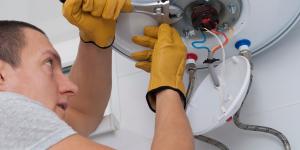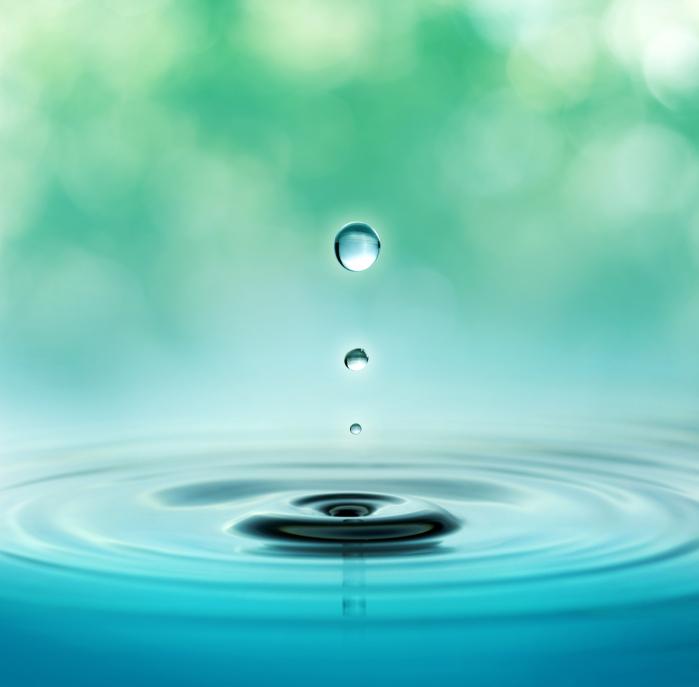10 Ways To Reuse Water At Home


Do you ever feel a pang of guilt when letting clean water gurgle down the drain? While 70% of our Earth is covered in water, only a small fraction of it is readily available for household use. Governments worldwide face ongoing challenges with water shortages, striving to meet the needs of growing populations. But what if there were simple ways to transform that "wastewater" into a valuable resource for your home?
In this oneHOWTO article, we'll unveil 10 easy methods to reuse water at home, helping you conserve this precious resource while potentially saving money on your water bill.
- Capture laundry rinse water
- Reuse Cooking Water
- Recycle water from air conditioning units and dehumidifers
- Repurposing sink and shower water
- Reuse drinking water
- Repurpose aquarium water
- Reuse unwanted ice
- Repurpose pool water
- Divert roof runoff
- Build a rain garden
Capture laundry rinse water
Did you know your washing machine's "almost clean" water can become a valuable resource? Capturing laundry rinse water, also called greywater, is a simple way to reduce water waste and save money on your water bill. Here's how to do it:
- Pay attention to your washing machine's cycle stages. The rinse cycle typically uses cleaner water than the wash cycle, making it perfect for reuse.
- Install a diverter valve on your washing machine's drain hose. This handy device allows you to switch between sending water down the drain or to a dedicated storage container.
- Attach a hose or pipe to the diverter valve, directing it to your chosen storage container. Make sure the connection is secure to avoid leaks.
- Choose a large, clean container with a lid to store your captured rinse water. This prevents contamination and minimizes evaporation.
The collected rinse water, while not ideal for drinking, is perfectly suitable for watering your garden or flushing toilets.

Reuse Cooking Water
Hold on before you pour that leftover water from boiling vegetables, pasta, or eggs down the drain! This seemingly ordinary water, often called "pot liquor," is also a nutrient-rich broth your plants will love.
As vegetables cook, water leaches out valuable vitamins and minerals like potassium, calcium, and magnesium. These dissolved minerals act as a natural fertilizer, giving your plants a healthy boost. Unlike chemical fertilizers, pot liquor is an organic source of nutrients and, in addition to the nutrients, the leftover water itself provides much-needed hydration for your thirsty plants.
Before using the pot liquor, allow it to cool completely. Hot water can damage delicate plant roots. While pot liquor is generally safe for most plants, avoid using it on salt-sensitive plants like tomatoes and peppers. The small amount of salt present in the water can harm these types of plants.

Recycle water from air conditioning units and dehumidifers
Both air conditioning units and dehumidifiers produce condensate water as they remove moisture from the air. This water can be collected in a container or directed into a storage tank.
The collected condensate is generally clean and can be used for various non-potable purposes such as watering plants, flushing toilets, or cleaning outdoor areas, helping to reduce overall water consumption in your home.While generally safe, condensate is not suitable for drinking or cooking. Avoid using it on delicate plants sensitive to mineral content.
Most AC units have built-in drains to collect condensate. If not, consider adding a collection tray or attaching a hose to direct the water to a storage container.

Repurposing sink and shower water
The water that flows down your sink or shower drain after everyday activities holds untapped potential. With a clever plumbing tweak and minimal investment, you can transform this "wastewater" into a valuable resource for your home.
Traditional plumbing systems treat all used water the same, sending it directly to the sewer system. However, by repurposing sink and shower water, you can significantly reduce your reliance on fresh, treated tap water for non-potable tasks like flushing toilets. This translates to a smaller water footprint and potential savings on your water bills.
The largest user of water in many homes is the toilet. By diverting sink and shower water for flushing, you can significantly reduce overall water consumption without compromising cleanliness.
The key to repurposing this water lies in a simple plumbing modification called a greywater diversion system. This system involves installing a diverter valve on your drainpipe, allowing you to channel the used water into a separate storage tank. The tank then feeds this water to specific outlets in your home, like the toilet or laundry room, for non-potable use.

Reuse drinking water
Does a forgotten water bottle linger in your fridge? Instead of tossing it, give it a new life. Fill it with clean water and use it to directly hydrate your thirsty plants. It's a simple way to reduce plastic waste and benefit your garden.
Did your afternoon tea go a little cold? Unsweetened tea (avoid sugary or herbal varieties) can act as a natural fertilizer for your plants. The leftover nutrients can give your garden a healthy boost. Just be sure the tea is cool before watering.
Your pet Fido finished his water bowl, but there's still a little left? This leftover water is perfectly suitable for watering your plants, as long as it's clean and hasn't been sitting for days.
This simple practice helps conserve precious water resources and contributes to a more sustainable lifestyle. With a little creativity, you can transform everyday leftovers into a valuable resource for your thriving garden.

Repurpose aquarium water
Did you know your aquarium water holds a hidden treasure for your plants? While it might seem like dirty water to you, it's actually a nutrient-rich fertilizer. Fish waste releases ammonia and other nutrients that are beneficial for plant growth. This "pre-fertilized" water can give your houseplants or outdoor garden a healthy boost.
Wait for any debris or sediment to settle before using the aquarium water on your plants. Avoid using water that has high ammonia levels or has been treated with harsh chemicals that could harm your plants.

Reuse unwanted ice
Those leftover ice cubes from a party or forgotten popsicles don't have to become a watery mess down the drain. Instead, they can benefit your garden. This is because ice melts gradually, providing a gentle irrigation for your plants. This slow release prevents overwatering and ensures the water reaches the roots effectively.
Unlike a sudden downpour, melting ice has time to soak into the soil, minimizing water runoff that can bypass thirsty plant roots. On a hot day, melting ice can provide a much-needed cooling effect for your plants, especially for those basking in direct sunlight.
Simply spread the unwanted ice cubes around the base of your plants. As they melt, the water will slowly seep into the soil, providing essential moisture.

Repurpose pool water
Swimming pools offer a refreshing escape on hot days, but maintaining their cleanliness requires periodic backwashing.
This process removes trapped debris and contaminants from the filter, generating backwash water. Traditionally, this water is simply discarded. However, with a little planning, you can transform this "waste" into a valuable resource for your lawn and garden.
Backwash water often contains small amounts of captured minerals and nutrients from pool chemicals. These can act as a mild fertilizer for your plants, promoting healthy growth. However, keep in mind that not all pool backwash water is suitable for reuse. Ensure the backwash cycle hasn't been heavily treated with chlorine or other chemicals that could harm your plants or soil health. Test the water's pH and chlorine levels before using it.
Finally, consider incorporating a settling tank or filtration system before directing the water to your plants. This removes any larger debris that could clog sprinklers or damage delicate roots.

Divert roof runoff
Rainy season can be an opportunity to harness the power of nature and give your garden a free, eco-friendly drink. However, the possibilities don't stop there. Depending on the quality of the rainwater, you can also use it for various non-potable tasks like washing your car or even doing the dishes.
To do it, simply place a rain barrel under your roof's downspout. This simple setup will capture the abundant rainwater, transforming it into a valuable resource for your home.
It is important to ensure your rain barrel is properly covered to prevent mosquito breeding.
Build a rain garden
Hanging baskets add a touch of vertical greenery to gardens, but their drainage can lead to water waste. A cascading irrigation system offers a solution by utilizing runoff water from hanging baskets to irrigate plants positioned below.
To do it, simply arrange hanging baskets at varying heights, creating a vertical arrangement. Plants with higher water needs can be placed in the baskets. Locate plants with moderate moisture requirements or drought tolerance at the lower levels of the garden. These plants will benefit from the cascading water, reducing the need for additional watering.
Well-draining soil and the use of mulch around lower-level plants can further optimize water retention and minimize evaporation losses.

If you want to read similar articles to 10 Ways To Reuse Water At Home, we recommend you visit our Maintenance and home security category.













